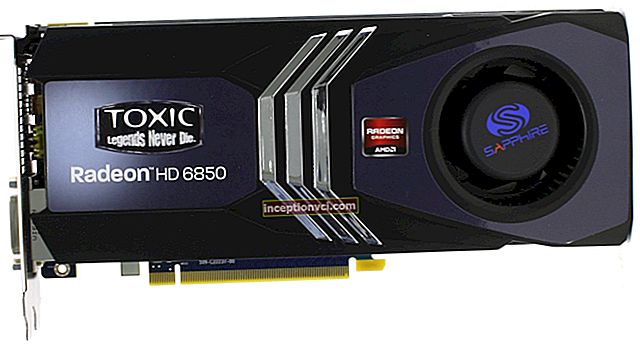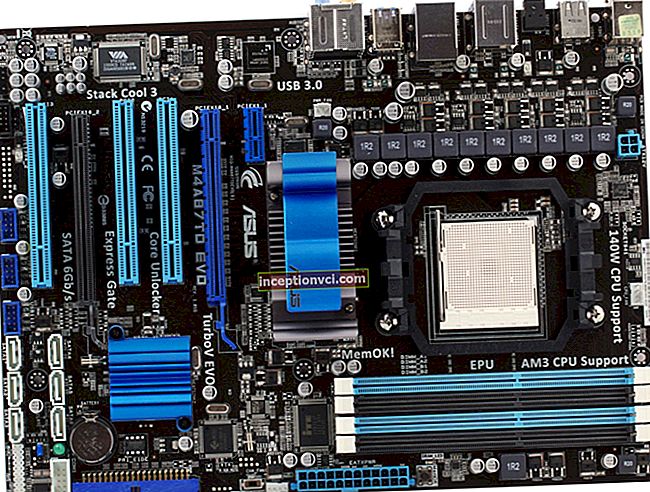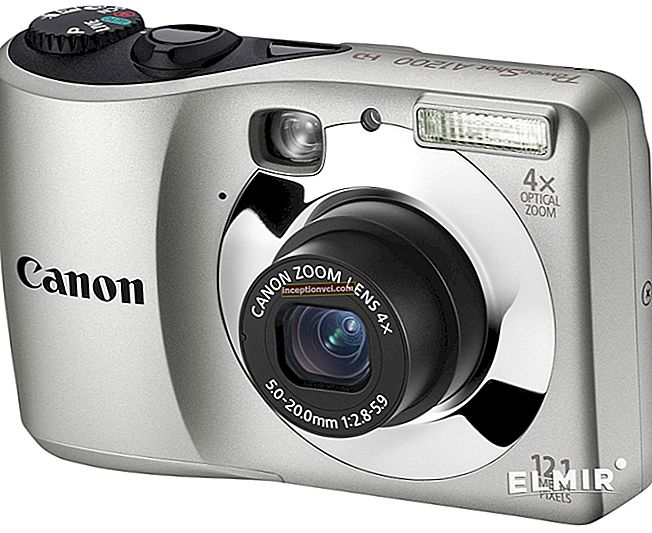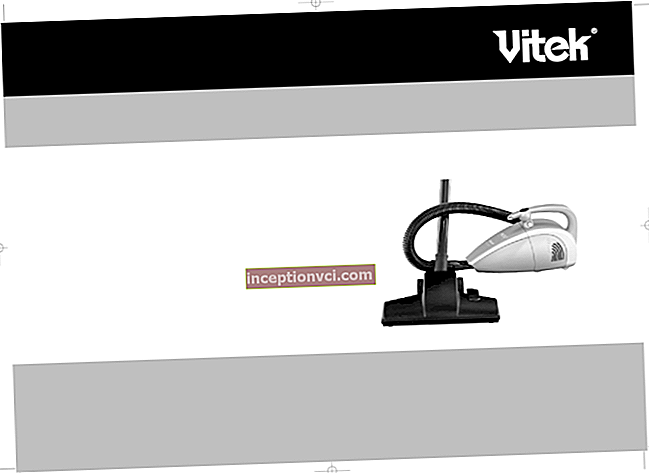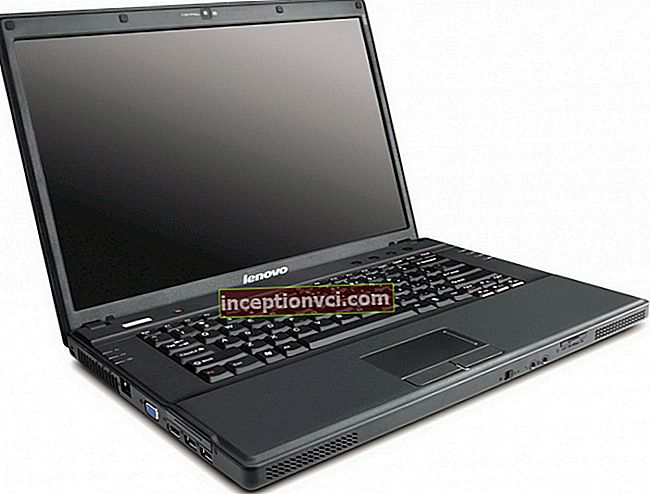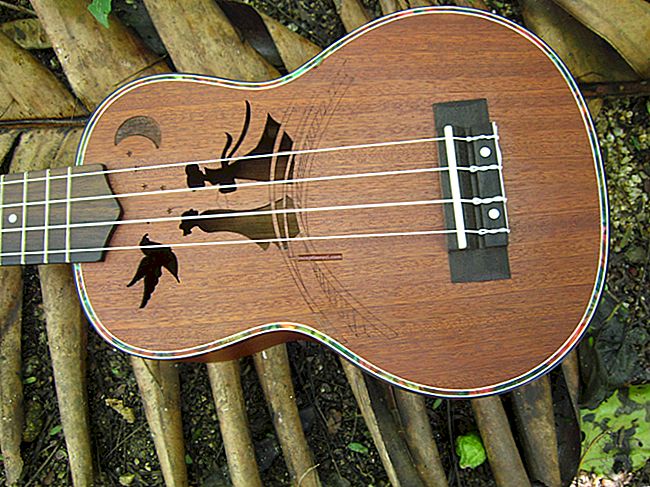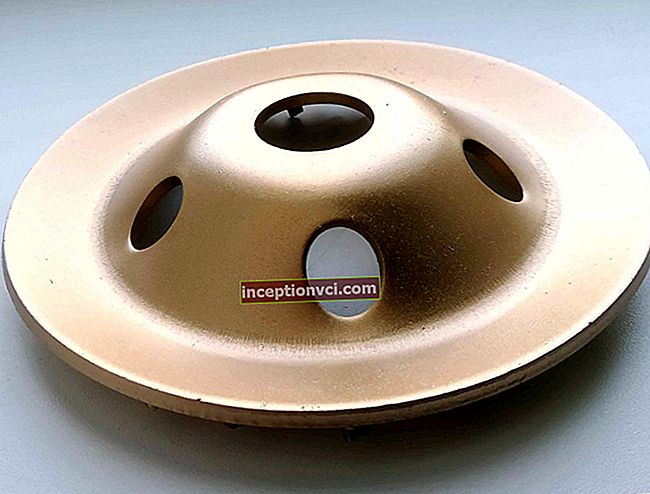Nowadays, ski poles are produced by many manufacturers. In my article I will restrict myself only to sticks of the upper two levels from such companies as: Fischer, Exel, KV +, Madshus, Oneway, Leki, Swix. Unfortunately, no Komperdell poles used by elite skiers could be found.
It is quite difficult to compare poles according to catalog data; it is better to do this directly on the track. However, not everyone has the opportunity to "feel" all the models, so I decided to compare the sticks in this review.
I went skiing with all the poles presented here. I also measured a number of characteristics, and summarized this information in the form of a table. I do not exclude that someone's feelings will not coincide with mine, and I do not deny the possibility of some variation in the measured figures. Nevertheless, the overall picture should be approximately the same.
I had to think for a long time about the need to assess the quality of the sticks, but nevertheless I decided to introduce a certain subjectivity, otherwise the article would have turned out to be just a review. Each stick, shaft, handle, lanyard, and support considered will be rated on a three-point scale. And general conclusions will be offered without choosing an outsider and a leader. Note that each of the sticks has its own pros and cons.
Exel
Exel is the most popular and renowned ski pole manufacturer in the world. Back in the 70s of the last century, athletes who performed with Exel sticks won many medals at the Olympic Games and at world-class competitions. In those years, the company had already manufactured a composite pole with an asymmetric support. What does Exel offer this season? These are Avanti tier 2 sticks and a WorldCup top model. Traditionally, these sticks are equipped with various handles and lanyards. The most popular are Evolution Race lanyard handles. The second model has a bright orange color, which makes the sticks highly visible. They can be seen even in a strong blizzard at a great distance.

WorldCup and Avanti are noticeably different, and you can feel it right from the start. It's about work, not paint.
Avanti are made of carbon fiber (CI 990), which makes them cheaper but softer. These sticks showed the greatest deflection of all samples 25 (39.5) mm by 1 (1.2) m, but the rod had nothing to do with it. Cheap poles can have significantly less stiffness and will be more comfortable for skiers with a large body weight and physical strength (without accented pushing with the hands). They will be a good option for girls, junior champions, especially when training on hard surfaces. It is also a suitable option for most skiers in the classic course. Balance and weight are average.
WorldCup - Essentially redesigned sticks from Exel. The upper ones have always been characterized by tough and very specific work. In this case, the manufacturer has successfully changed a number of characteristics. This model is able to easily find a new fan, but I do not exclude that there will be people who will not like the new concept.
It should be noted that the carbon fiber poles (CI 1000) have a special character. The stick tube weighs a record 57.4 grams! The manufacturer achieved this weight reduction not only through the use of resins and special fibers, but also by reducing the wall thickness to 0.5 millimeters. In practice, this is the thinnest tube of all the specimens presented. Not scary from such numbers? And the sticks work great.
With regard to the stiffness of the rod - it has a good average value of 20.5 (29.5) mm. Torque and balance are also at an average level. The foot is installed on the stick without glue due to the heat shrinking of the material itself.
Exel sticks can be completed with various handles and lanyards. The most popular kits are the Cork World Cup and Cork Evolution lanyard cork handles.The ALIS Cork quick release handle and the X-Force Evolution curved handle are also available. And the biathlon option remained.
The X-Force grip may seem comfortable. It makes significant changes to the general characteristics of the stick, since it is quite heavy (13 grams heavier than the Cork Evolution). By making the handle heavier, we thereby shift the balance towards the handle, but also increase the weight of the stick. The X-Force handle cover material is very durable but slippery.
As for the QLS release system, it is more designed for ordinary ski enthusiasts. The design of the handle and lanyard seemed to me very flimsy and simple for this kind of load. In addition, the handle requires a change in the length of the shaft as it has a different length. Starting from the 2010-2011 season, Exel has been producing the 2nd ALIS variant - the Centra Eco system.
I don't really want to touch on the issue of durability, but I note that many Exel pens and lanyards quickly begin to deteriorate during use. Their aesthetics are violated (shaggy), however, functionality continues to delight the skier for a long time. Perhaps this season the manufacturer will improve the consumer qualities of the product, and then the specified brand of sticks will confirm its popularity. The phrase from the catalog confirms this idea: high-end sticks will be produced in Europe in accordance with European quality standards from environmentally friendly materials.
Fischer RCS Carbonlite
I'm already used to the fact that Fischer presents a wide range of its products on the market. Soon it will be five years since fans of this brand can use the poles of the same name along with boots and skis. If at first they produced sticks based on SWIX, now they have mastered their own production.

RCS Carbonlite top stick provided for testing. It has a 16: 9 profile tube with good performance. The use of glass-reinforced polyamide improved the wear resistance of the foot, but made the petal itself relatively soft. This disadvantage can reduce the efficiency of repulsion, but at the same time it makes it easier to pull out the stick in the event of a ski run over it. The manufacturer offers 2 sizes of feet for different weather conditions.
The catalog contains the stiffness of the rod of 40 millimeters without specifying the method of its measurement, and the weight is 155 grams. My stick weight was 166.5 grams.
In terms of their functionality, the sticks are good. But there is a feeling of a certain passivity - the reciprocal returns of efforts are not felt. Apparently, this is due to the high rigidity of the rod itself. Some of the ladies in the biathlon and ski elite prefer these very stiff poles.
Fischer is systematically trying to introduce something new. For example, the sticks now have the original Ergo Wedge handle. It is believed that moving the lanyard exit point to the axis of the pole will improve the skier's transfer of force and hence the take-off efficiency. In reality, this decision is ambiguous. It seems to me that with this shape of the handles and lanyard mounts, it became easier to make the sticks work harder for bending. This is especially pronounced when the palm rests on the handle and the increased impact on the lanyard. However, the very high stiffness of the rod tries to compensate for this effect, and everything falls into place.
For advertising purposes, it is said that the Fischer lanyard is the first to have a three-dimensional shape modeled after the shape of a human hand. It is quite comfortable, but in some cases there is discomfort. Before buying, I recommend trying on a lanyard and trying to push on the stick.
A little later, updated ski poles were released, on which the engineers installed the new Quickfit lanyard. For the convenience of putting on and taking off the stick, it was proposed to use an original solution in the form of a zipper. Interestingly, the weight of this lanyard has even decreased by 2 grams compared to the previous model. Weight reduction was achieved by introducing perforation in the wrap material. Although, the presence of zippers remained a controversial solution to the problems of accelerated putting on and taking off the lanyards. Taking it off has become easier, but putting it on quickly is not always. As for the handle and foot, they remain the same.But the rod retained its high rigidity and changed color. For the convenience of cutting, a symbolic "ruler" is applied directly to the rod. Someone may find such a solution useful.
For skiers of tall stature and lovers of great rigidity, I recommend testing these poles. You will immediately feel the difference in pushing with your hands.
KV +
This is a young Swiss company that has been actively gaining momentum in the ski industry since 1998. More and more often you can see a skier with sticks of this brand. I tested 2 models: Elite clip and CH1 clip. Previously, the sticks were orange, and now they are bright green. Functionality and recognition remained at a fairly high level. The sticks have good stiffness and low weight. The lanyard and handle design has a Clip quick release system. The lanyard itself, without unnecessary adjustments, sits comfortably on the hand and has a universal size. Elite poles are equipped with similar lanyards and handles.
The shafts of the 2nd level poles are mirrored for a special aesthetic. The rod is slightly softer than CH1, but this does little to degrade performance at a lower price point. I want to say that last season these models were equipped with the new Clip race handle. It has 2 features: a new version of the lids for releasing the lanyards has been made, the corks only partially cover the handles. The lanyards are fixed in the handles by means of rods, which are lowered under the action of the covers. The Clip system is designed to be robust enough for use in summer and normal winter conditions. For those accustomed to using traditional pen lanyard designs, KV + has a couple of these, including a biathlon loop.

Leki
Despite the fact that the German company Leki was founded in 1948, and began to work closely with ski poles since 1973, only recently it began to gain popularity in the world. Leki has made a serious break in biathlon after developing her own quick release system. Most of the famous German biathletes began to use the Leki to improve their results through innovation. In our country, skiers with poles from this manufacturer are also increasingly encountered. Leki sticks are easy to recognize as they have a unique handle with a lanyard (special glove) and a special coloring.
The Trigger quick release system does not fail and is implemented quite simply. Even after hundreds of kilometers, the thin loop will not change significantly, while retaining its characteristics, it will not break off. Engineers periodically change the Trigger Shark system, but the essence has been around for years. Translated from English Shark means "Shark". The top of the handle really looks a lot like a shark's mouth. The lanyard perfectly covers the hand, although it is made to fit a universal size. There is one plug on the handle on the side of the fingers, which does not in the least impair the contact between the handle and the wrist, and also practically does not make it heavier. Among the tested, the weight of the lanyard and handle set is average - 67 grams.

The Super Shark Carbon model belongs to the elite sticks. Their rods bear the inscription "Ultra lightweight carbon 55g / m". During the tests, fairly close data were obtained (60g / m). The buyer should understand that this is a bare rod (even without painting), and not a whole stick. This rod has good rigidity and low weight, which together with the lanyards and unique handles make for excellent ski poles.
The HM Super Carbon model is comparatively heavier than the top model - the weight is indicated at 61g / m (according to my measurements 69.5g / m). When you hold two models in your hands, you don't immediately feel and see the difference. However, it is worth skiing, and the differences are immediately apparent. After a couple of kilometers, the hands feel the difference in the sticks. They are good for recreational starts or training, but not good for high speed races. Visually, this model can be distinguished from the Super Shark Carbon model by the following features: by the foot, changing the size (4 in 1), and by the increased diameter of the rod at the bottom (9mm instead of 7.5mm.).The advantage of the transformable foot was not appreciated. The stick itself is not light, and after the weighting of the support part it is quite difficult to “row”.
I want to say that the appearance of the sticks hardly changes from year to year. There are also minimal differences in the coloring of the first three levels. But the cost and characteristics can vary significantly. This nuance should be borne in mind when you are thinking of purchasing sticks from this company. So, the HM Super Carbon and Shark Carbon models are very close to each other in terms of parameters, and their prices are very different.
Madshus - this Norwegian company, known only recently.
The Nano Carbon Race 100UHM model in the ski market is positioned as the top one. It features a unique cork-coated bent handle. Rumor has it that Bjoerndalen himself was directly involved in the development of these pens. The handle tilt seemed to me less pronounced than that of the Exel X-Force, so it is not so easy to feel the significant differences of the handle from the usual design. Personally, I could not feel its advantage, even after driving a few kilometers. The stick itself has good rigidity and a fairly low weight, perfectly balanced. Pay attention to the foot, which weighs only 7 grams, which is the absolute record for my test.

The Carbon Race 100HS is a tricky tier 2 pole. Its performance matches the top-tier poles of some other manufacturers, and even surpasses the Carbon Race 100UHM in weight! The model has a traditional handle, foot and its own shaft. It is strange that the rod has 9mm at the base, and the top 100UHM model has 10mm. When equipped with a lighter handle, the stick gained in weight, even with a heavier foot and shaft. The stiffness of the stick shaft is 100HS corresponding to the second level models. I would like to note that the rod and handle of this model are reminiscent of the Fischer samples of the previous season in terms of materials and manufacturing technology.
The lanyard design is one for these models. Its execution is quite simple, and allows the skier to effectively push off. Materials are used hard, but gradually take the shape of a brush. The adaptation to the hand can be accelerated by preheating the lanyard.
I draw your attention to the fact that the declared sizes do not correspond to the traditional ones (M, S, XL, L - the largest). The optimal size for most men is M. The manufacturer gives recommendations for adjusting the lines and offers a table for choosing a lanyard. When buying poles, it is important not to be mistaken about the size of the lanyard, otherwise you will be disappointed.
One way
One of the youngest in the production of poles, now a well-known company from Finland, she was able to attract many elite biathletes and skiers in a short time. What is the secret of her sticks?
The Diamond Storm 10Max WC amazes with its lightness from the first moment. Its weight confirms these feelings - 317 grams for two 160 cm sticks. It turns out that the weight of one is only 158.5 grams. Bravo! This is the best indicator. The light weight creates a low moment and the sticks are not felt in the hands.
Everyone who has ever walked with these sticks felt their difference. The feeling of weightlessness is constantly present. This is what attracts One Way to itself.

The stiffness of the rod is also high. It has one of the best stiffness and weight indicators (60 g / m). The handle is made using high quality balsa wood. But the design of the lanyard is quite controversial, and most consider it not entirely successful. The engineers implemented an innovative 4-line system, selected good materials, but it does not stand out in comparison with other lanyards. The lanyard requires more attention, regular adjustment to the wrist. It is possible to quickly insert a hand into it only with a certain skill, since it has a large number of degrees of freedom. This design is not at all suitable for biathletes. As a result, many people install simple loops on these sticks. The outwardly updated Diamond Storm 10 Max came out last season.
Swix
This Norwegian company is currently one of the leading cross-country ski poles. The constant search for new materials and solutions, a wide range of products, attraction of well-known skiers - all this contributes to the growth and retention of positions in the sports market. And the history of the production of sticks under the Swix brand began relatively recently. Only in 1974, after the purchase of the Norwegian factory Liljedahl, which was engaged in the production of ski poles, the Swix company began to produce poles with its own brand.
Swix is systematically bringing something new to the table. For example, in 2006, the unique Force10 monolithic sticks were introduced to the world. They were used by famous athletes in cross-country skiing, and anyone could buy them, however, for a decent amount. However, the company's expectations were not met, and this model quietly left the market. It seemed, what else can be offered to the consumer after Force10? But the Swix engineers did it. Another novelty is on sale - Triac 1.0 RC100. These ski poles are unique in that they use a triangular carbon fiber rod. This shape has a number of advantages over a circle and an oval. The production of sticks of similar stiffness requires less starting material, and therefore, their weight is reduced. In addition, the stiffness is distributed evenly and practically does not depend on the directions of force. If an oval rod is used in the stick, then under load, the sticks bend along the minor axis. In an equilateral triangle, this does not appear externally. In addition, the new poles have an updated lanyard handle and quick release support.
Famous skiers, including the Olympic team of Ukraine, became the first testers and consumers of these sticks. Triac 1.0 will go to retail starting this season. I tried these sticks and the first impressions were very good. The sticks are quite light (320g. 160L), have moderate stiffness and good balance. The lanyard and handle are very comfortable. The stick on your hand is easy to hold, and with each subsequent push you want to go faster and faster.

If you look at the measured parameters, there are noticeable improvements in values in many parameters compared to the popular RC700 STAR CT1 model. In this regard, advertising from the SwixTriac promo site is more reflective of the truth. There is no doubt about the words of the megastars.
Many are confused by the attachment of the foot and its design. Someone even for greater reliability drips hot glue before installing it. But, if you study the design of the connection, and try to pull off the tab, then you will find the answer to this question. The fact is that the bottom of the rod ends in a circular section, tapering for clamping, and at the end there is a groove that prevents the foot from turning. If the nut is tightened on it, then it practically cannot be turned, and not ripped off. It is only recommended to check the nut before starting the race.
The new handle also has a triangular hole and is only suitable for triangular rods. It has an improved lanyard clip. By pressing both buttons, it is easy to remove the cover clip. As for the lanyard itself, a special insert has appeared in its design between the thumb and forefinger. This small detail greatly enhances the lanyard's coverage of the hand. The material itself is quite well selected both in terms of its main characteristics and in terms of colors. The only thing that seemed to me was that the outer layer of the lanyard was not durable.
In terms of recognition, SWIX has introduced a new 'X' style since last season. In this style, sticks were painted and the making of clothes began.
Before the Triac, the RC700 STAR was the top of the Swix line. They have a comfortable lanyard and handle, as well as a standard round shaft. These sticks are purchased by most skilled skiers for many seasons. They have proven themselves positively from all sides. Starting from the season before last, the poles are equipped with the original Force two-level foot, as well as the new Pro Fit lanyard with neoprene. In the past, a similar design was installed on Force10 sticks.The Force foot features a small petal size, oval shape and a uniquely sharpened carbide tip.
Simplified Star model - RC710 Team CT2 poles. They are quite popular in children's sports schools and among advanced skiers. Team differs from Star only in core. The handle, foot and lanyard correspond to the older model. But the rod is endowed with very modest characteristics. It is heavier and softer. However, this does not make sticks uninteresting at all. The manufacturer recommends using them at mass launches, where equipment breakdowns are frequent. The Team shaft resists shock better than the Star shaft.
In addition to poles, Swix manufactures a variety of components and accessories, including biathlon loops, oversized feet and the Just click quick release system. The Just click lanyard handles can be rearranged onto racing poles, and some famous skiers do just that. This lanyard is almost as comfortable as the Pro Fit, and its handle has a cork finish. The increased weight of the stick does not affect their performance, since the balance is shifted towards the handle.

In the 2010-2011 season, Team and Star sticks were still produced, but only with a changed color and designations. Interesting news from Swix - attempts have been made to classify sticks on a single scale. Finally, the PFI index is introduced, which summarizes the main characteristics of the sticks (weight, stiffness, strength). This makes the choice of a skier more meaningful. Triac sticks have a specified index of 1, Team - 1.6, and Star - 1.3.
How to choose cross-country ski poles: results
General parameters and results of measurements of the tested sticks are given in table no. 1, and the characteristics of the rods in table no. 2. The best values are in red and the worst in blue. For example, the table shows that the lightest sticks were OneWay Diamond Storm Titanium (317 grams), and the heaviest ones were Leki HM Super Carbon (378 grams).
When comparing parameters, pay attention to the level in the company's lineup. This will give an objective picture.
About the accuracy of measurements. Measuring parameters is not as easy as it might seem. The fact is that a stick is an inconvenient item for measurements. They have a complex shape and a fairly long length. In addition, after disassembly, a different amount of glue remains in the elements, and this makes adjustments to the weight. The length was measured with an accuracy of 5 millimeters, the deflection was up to 1 millimeter, and the weight was measured up to 2 grams. I tried to provide stable conditions, but better accuracy is difficult to achieve. Is it necessary?
As for the size of the sticks, the popular 160cm sticks were chosen. I want to note that the longer the stick, the more informative it is. This is due to the fact that characteristics such as balance, weight and moment are directly dependent on length. To my regret, it was not possible to find Fischer sticks of the required size, which is why the measurements were carried out on sticks 157.5 cm long, and subsequently recalculated to 160 cm. This recalculation was carried out according to the specific weight of the bar and the allowance on the balance sheet due to its greater length. It should be understood that almost all parameters depend on the length, so the layout in the table may be different for short sticks. Although, the general trend will hardly change.
To assess the characteristics of sticks in one scale, a 3-point assessment system was introduced. The points are summed up according to the rule: the lowest parameter is 1, the norm is 2, the best parameter is 3. A slight deviation from the best and worst options is allowed. The handles and feet are evaluated using a combined rating that considers usability, weight, durability and design. The marks were given regardless of the level of performance of the stick. If the recommended retail price (actual cost may be lower) is higher than $ 300 - 1, up to $ 200 - 3, and between $ 200 and $ 300 - 2. As a result, the estimate with and without cost is calculated. The results are shown in Table 3.

Table 1. Main characteristics of ski poles

Table 2. Characteristics of rods
* The Fischer representative provided sticks with a length of 157.5 cm.The parameters are given taking into account the simulation of a 160 cm size.

Table 3. Objective and subjective assessments
How to choose ski poles: conclusion
It is impossible to accurately answer the question of which sticks are the best due to a number of factors that are difficult to take into account at the same time. You can define a couple of models suitable for specific tasks. For example, for a tall, strong, heavy skier, junior or their style of skiing.
Let me remind you that the manufacturer rarely changes the design of a successful stick, sometimes it is simply repainted. But there is also an exception when seemingly similar sticks have differences in parameters. So, pens, lanyards or rods of the same appearance, depending on the year of manufacture, may have different weights and other parameters. Before purchasing expensive sticks, it is better to test them with friends. If you like it, then you should definitely remember the differences (size, diameters, read all the inscriptions, study the design of the handle with a lanyard, coloring, support). After that, you can start looking for the best price on the market. Keep in mind that the rods may differ from each other in weight and stiffness even in the same season, but this is more true for poles of the second and lower level.
Also, before choosing, you may be advised to study the tables about the tested sticks. Perhaps you will first find the best stick for yourself. You should not exclude the creation of your own design from a set of components, not excluding domestic rods. Such a set can be much cheaper with good operating parameters. Remember that the toughest sticks are not always strong, and the lightest ones are not always durable. Remember to choose the right support (size, shape) and lanyard (size, design). After all, your speed on the track and the nature of the whole stick depend on them.
Table 3 shows that the quality / price ratio evens out the rating. So, practically five models apply for the 1st place, and the sticks are of the upper level. Five second-level models are close enough to them. I would like to emphasize once again that the recommended cost is indicated. If someone can buy something cheaper, then you should look at the rating without cost or make an amendment yourself.
Read: "How to Get Rid of Depression in Winter: 14 Guaranteed Ways to Bring Back Optimism"

